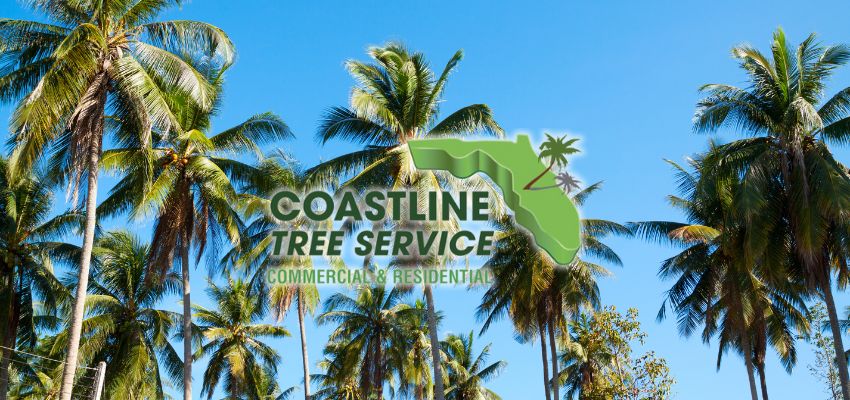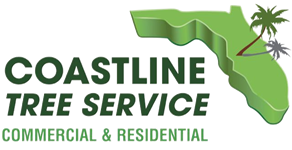
Creating an Oasis: Key Considerations for Selecting, Planting, and Nurturing a Palm Landscape in Your SW Florida HOA
Welcome to a journey through the world of palm trees in sunny Southwest Florida. As we SW Floridians all know, out tropical and subtropical climate is the perfect environment for palm trees to thrive and flourish. With a wide array of species available, each with unique characteristics, palms can enhance almost any landscape in this region.
In this blog, we explore this wonderful world and shed light on the navigation process & what to consider when selecting, planting, and nurturing palms for your SWFL HOA & Property. We’ll delve into their unique characteristics, and provide practical tips on selection, planting and care. Let’s dive in.
Are Palm Trees Like Any Other Tree In SW Florida?
Palms are quite different from shade trees and conifers in appearance, growth, and care requirements. Unlike trees, each trunk or stem of a palm has only one growing point above ground, known as the terminal bud, situated at the top of its trunk.
If this terminal bud suffers injury, the palm often succumbs, particularly if it’s a single-trunked palm. However, for palms with multiple trunks, the loss of one trunk usually doesn’t spell doom for the plant.
The roots of palms in Southwest Florida differ from those of trees, as they don’t thicken over time, posing less threat to sidewalks and utilities. The root initiation zone, sometimes visible at the trunk base, continually generates new roots.
As a result of these unique characteristics, palm trees are an ideal choice for the SW Florida environment and the many HOA communities within the area. It is for this reason why its crucial to have a great understanding in the proper selection, planting and care for these trees.
What To Consider When Selecting A Palm Tree For Your Property
Here at Coastline Tree Service, we believe in asking any and all questions possible. These will vary depending on your tree selection needs but some of the major ones to consider are:
- Why is the palm being planted? Will it act as a windbreak or screen (clumping palm)? Will it be a focal point of the landscape?
- Does the planting space and location lend itself to a large, medium, or small palm?
- Are overhead or belowground utilities nearby?
- Is the site sunny or shady, windy or protected?
- Is the soil deep, fertile, and well drained, or isit shallow, infertile, and compacted?
- How much maintenance are you willing to provide?
- Does the palm have large fruits or fronds that need to be removed regularly to reduce the possibility of injury, litter, or property damage?
Asking and answering these and other questions before selecting a palm will help you choose the “right tree for the right place”. After those considerations and questions have been answered, now comes the type of palm tree you will want to purchase for your tree landscape.
What To Consider When Purchasing Palms For Your SW Florida Tree landscape
Most palm trees start their journey in the controlled environment of a nursery, with many growing within the confines of containers. However, for larger specimens that require more space to flourish, they may be carefully dug up from field stock and transplanted to a new location.
When it comes to integrating palms into your own landscape, the key to success lies in selecting a healthy specimen. A robust palm tree will not only adapt better to a new environment but also grow more vigorously, enhancing the aesthetic appeal of your landscape. Therefore, understanding how to identify a healthy palm becomes crucial to ensure optimal results in your landscaping endeavors. Let’s explore this a bit more in depth.
A high-quality palm has:
- A properly-sized root ball for the species and uniform trunk diameter consistent with the species’ characteristic trunk diameter.
- A trunk free of mechanical wounds and wounds from incorrect pruning.
- Full crown of healthy, vigorous fronds. (Sabal palms/Sabal palmetto are purchased with fronds removed.)
A low-quality palm has:
- Trunk sections of varying diameter (“hourglass”) or small diameter below the terminal bud (“penciling”).
- A trunk with wounds from mechanical impacts or incorrect pruning.
How To Properly Plant & Move Forward With Your Newly Chosen Palm Tree(s)
Now that you have decided on your palm trees, the next task is to properly transplant your palm tree into your existing tree landscape. For palms dug from a field where root disturbance can be severe, the best time to transplant is the beginning of the warm season—early to late spring depending on location. On the other hand, palms from a container can be planted just about year-round as the roots are usually not disturbed.
In either circumstance, you typically will do the following when planting your new palm tree:
A. Proceed to take off any wrappings or remove the container.
B: Before planting, it’s essential to eliminate any dead or dying fronds from the palm. To safeguard the terminal bud during transport and planting, secure the remaining fronds, limiting their movement. Once the palm is planted, you can remove these ties.
C: Ensure that the planting hole is approximately 18 inches (or 46 cm) wider than the root ball of the palm. The depth of the hole should be such that the point at which the roots branch out from the trunk is level with the surrounding soil or grade when the root ball is placed inside. Position the root ball on a bed of tightly packed soil to avoid any future sinking. Carefully backfill the hole with the original soil if available, and use water to firmly settle the soil around the root ball.
D: Spread a layer of organic mulch, about 2-4 inches (5-10 cm) thick, in a radius of 2-4 feet (0.6-1.2 m) around the palm. However, avoid piling the mulch too close to the trunk. Maintaining a mulch-free zone near the trunk will help to minimize excessive moisture and avert decay.
Lastly, Top Key Maintenance Factors To Consider
Irrigation
Once your tree or trees are planted, the watering requirements of a palm can vary depending on its species and the climate. The objective is to maintain consistent moisture in the original root ball, backfill, and the surrounding soil – it should be neither too dry nor overly wet. In cooler seasons, it’s advisable to water the palm 1-2 times weekly for the first three months post-planting. However, in warmer seasons or during dry seasons, increase the frequency of watering to 3-4 times per week, until the palm is well-established or there’s sufficient natural rainfall.
Fertilization
Depending on the specific palm species and its environment, there may be a need for fertilization to offset nutrient deficiencies. These deficiencies might include nitrogen, which can cause both old and new fronds to yellow; potassium, indicated by old fronds displaying yellow or orange flecks; magnesium, evidenced by a yellow band encircling the fronds; and iron, which can lead to yellow young fronds despite green mature ones. Manganese deficiency, often found in alkaline soils, can result in fronds that appear yellowed, brown, or ‘torched’. Lastly, a lack of zinc may lead to undersized fronds. Each of these nutrients plays a critical role in the health and vitality of palm trees
Mulching
Organic mulches are beneficial in multiple ways. They gradually decompose and nourish the soil with nutrients, protect against harm from lawn maintenance equipment, curtail weed growth, conserve water, and enhance the structure and condition of the soil. To leverage these benefits, spread a layer of organic mulch, about 2-4 inches (5-10 cm) thick, extending around the palm to a distance of 2-4 feet (0.6-1.2 m)
Disease & Pests
Palms are prone to a variety of threats, including infections from fungi and, on occasion, viruses and bacteria. They’re also susceptible to invasions by insects and other pests, with the specific infectious agents and pests varying greatly depending on the region. To tackle such issues, consider seeking advice from a university extension service, consulting arborist, or a plant health care specialist who has expertise in dealing with palms in your local area. They can help diagnose the problem and offer appropriate treatment recommendations.
Pruning Of Your Palm Tree(s)
Lastly, palms often require pruning to eliminate dead or dying fronds, flowering inflorescences, and fruit clusters that could pose a threat to public safety, such as coconuts. Typically, this maintenance is carried out at least twice a year, with coconuts requiring more frequent attention – every 3-4 months – to reduce the risk of injury or damage from the hefty fruit. It’s crucial to exercise care during this process to prevent any harm to the terminal bud, as over-pruned palms may experience slowed growth and become more attractive to pests.
The general rule of thumb for pruning is to remove only the old, dead, lower fronds unless additional clearance is needed. In some cases, it may be permissible to remove live green fronds if the frond shaft has descended below a horizontal plane. However, it’s worth noting that the removal of live fronds where the shaft is more than 45 degrees above horizontal does not seem to decrease future pruning needs.
And one last note – climbing spikes should be avoided when climbing palms for pruning. They cause permanent damage to the palm trunk, and unlike in other trees, wounds on palms do not heal.
In conclusion, ensuring the health and vitality of your palms is a task that requires careful attention to their specific needs and understanding of how to combat potential threats.
From understanding the nutrient deficiencies that can affect their growth to knowing how to combat infections and pests, each aspect plays a crucial role in ensuring your palms thrive. Regular pruning, when done correctly, not only enhances the tree’s aesthetic appeal but also contributes to its overall health. Remember, while palms are resilient, they require consistent care and attention to truly flourish.
But remember, maintaining the lushness and majesty of your palms can be a demanding task. This is where Coastline Tree Service comes in. With our expert knowledge and years of experience, we can help you manage everything from nutrient deficiencies to pest control and regular pruning. Trust us to give your palms the consistent care and attention they need to remain a vibrant part of your landscape. With Coastline Tree Service, your palms are in safe hands.
Is Your Tree Landscape In Need Of Tree Management Services?
Give Us A Call! We have the equipment, man power, and on staff expertise (certified arborists & tree experts) to handle all of your tree service management needs in SW Florida including all tree trimming, tree removal, tree pruning, root pruning & tree stump removal services to name a few.
We proudly serve and offer tree trimming services in Naples, Marco Island, Bonita Springs, Estero, Fort Myers, Fort Myers Beach, North Fort Myers, Cape Coral, Sanibel & Punta Gorda.
Give us a Call at: (239) 895-3230 or contact us online at:https://www.coastlinetree.com/contact-us/
